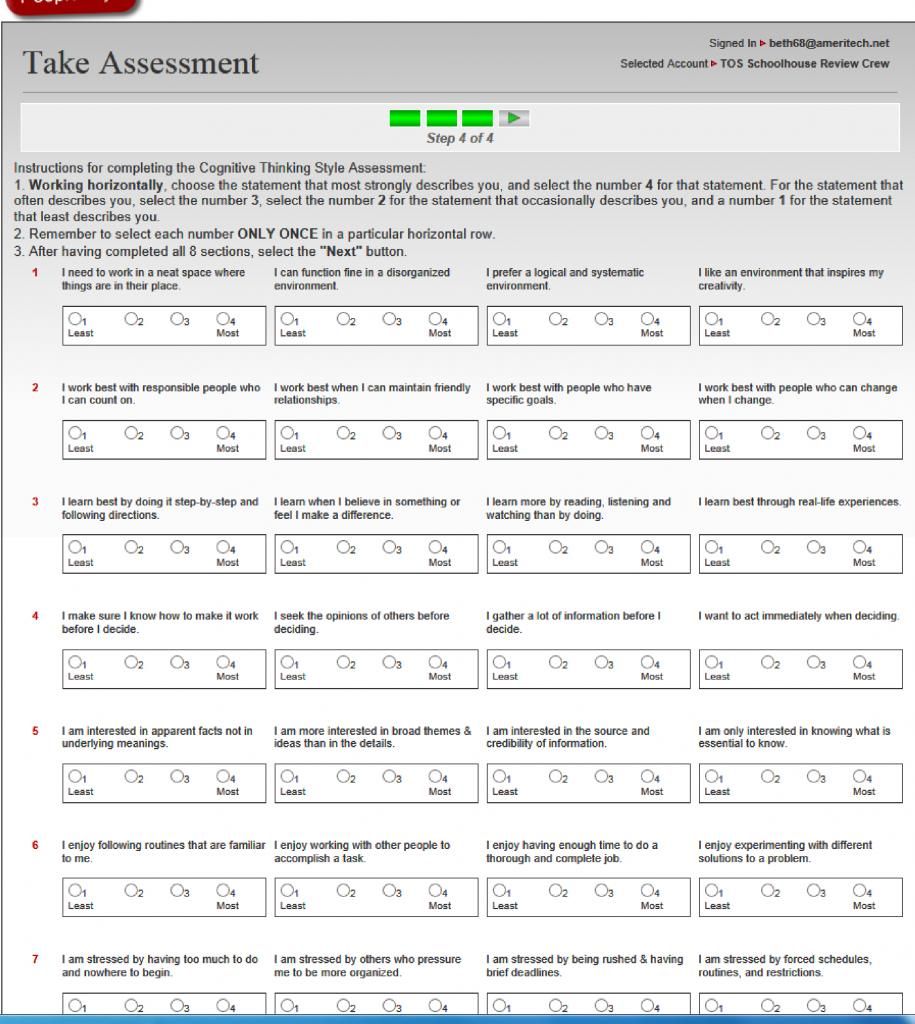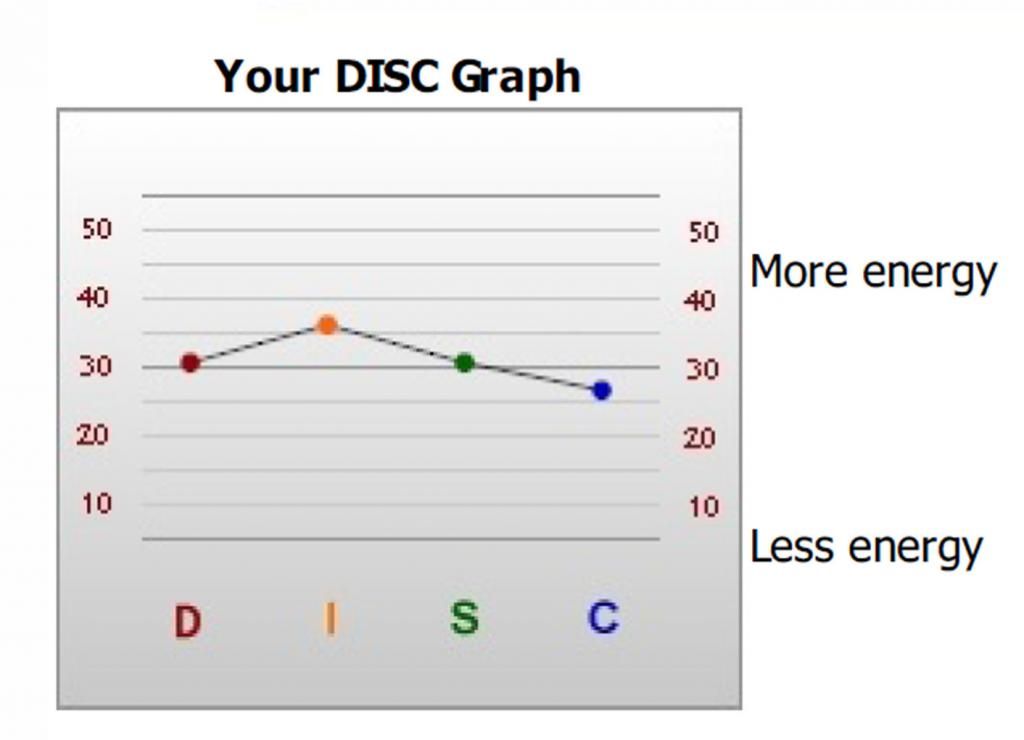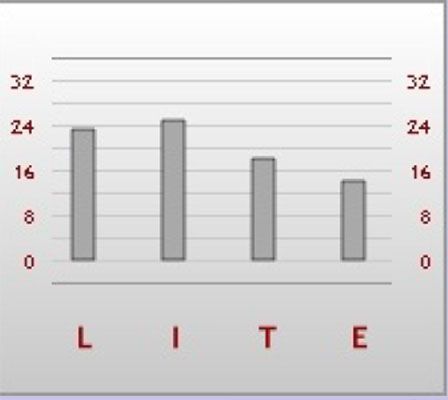
Hasn’t there been a time in every parents life when they wished their kids came with an owner’s manual. I felt that way the first night in the hospital with my son. Heck, I’d be happy for a sheet that said “the baby will stop crying if you follow these steps.” And just when you think you’ve got things figured out along comes kid number two and they seem to be wired completely differently. As a parent, I want to know what’s going to motivate my kid—something beyond the “carrot or the stick” method of bribing rewards or threatening punishments. As a homeschooler, I want to know the best way to get the information to stick in his noggin. Along comes PeopleKeys with, as their name implies, the key to unlock your child’s potential. We were given access to their Student Strengths Report , part of their StudentKeys product line.

The $20.00 fee gives you one keycode to access the online three part quiz. Make sure and save the code! If you can’t finish the quiz in one sitting or you want to access the Strengths Report you’ll need to re-enter the code.
The quiz itself is not long (two sections had only 8 questions each, the third may have had a few more), but we did have to do it in baby steps as my son was getting frustrated. It is designed for ages 13-adult and I had thought with his advanced reading skills this wouldn’t be a problem. However, he is a little behind the curve when it comes to making choices, being able to articulate emotions, and recognizing motives behind actions (including his own). I had to explain terms like “authoritative” to him and even then he wasn’t sure he liked to be around authoritative people for one of the questions.

The majority of the quiz was made up of sets of four statements and he had to rank them (1 to 4) from what least describes him to what most describes him. WARNING: read the directions carefully. Schnickelfritz had filled out a whole page selecting 1 as most like him so our results would have been the exact opposite of correct if I hadn’t caught the error before submission. It was often easy for him to pick out one extreme or the other but he had a hard time ordering the other 2 or 3 statements.
It was possible to go back to previous pages of the quiz (which I did after catching his ranking incorrectly) before submitting it, but you cannot review the questions once you have the results report.
What we received was a 34 page report divided into three sections: Personality Styles, Learning Styles, and Cognitive Thinking Styles. Incidentally, my son’s name was printed in the top right hand corner of every page, so if you’ve got several kids or students you may want to keep these reports from prying eyes who might tease others about their perceived weaknesses.
Personality Styles

The four components of personality are: Drive, Influencing, Steadiness, and Compliance. For my son’s particular pattern, he’s been labeled as a Communicator with traits like: love being around people, high energy, articulate, small attention span, may become careless and disorganized. Yep, that described him a lot of the time.
There was only one page devoted to Fritz’s style, but 15 generic pages covering characteristics of each letter: strengths, potential limitations, what motivates, ideal environment, how to enhance communication with each, etc.
Learning Styles

Homeschoolers are probably most familiar with the learning style section of this report. I’d known that learners have been categorized as Auditory, Visual, or Kinesthetic depending on how they take in information. For this section there was a brief overview of all three styles, but then three pages of information specific to visual learners—his dominant style. One page gave a list of phrases to listen for in conversation to help identify learning styles in others (in case they hadn’t taken the Strengths quiz themselves). There were also several interactive pages where he could do exercises to apply his learning style to choose a career and design his ideal learning environment.
Cognitive Thinking styles

Once you’ve taken in new information you must process it in your mind to make sense of it. These thinking styles have been categorized as: Literal, Intuitive, Theoretical, and Experiential. Again we had a 1 page overview of all four styles but the remaining pages focused on Fritz’s Intuitive style: how to capitalize on strengths, how to improve learning. And this is the one that doesn’t seem to be as accurate. The I style are supposed to be good at “reading into” what others say and adjusts easily to changes in routine. That doesn’t describe my son at all! (Incidentally, this was the quiz section he had ranked everything backwards and we had to change everything. I wonder if we’d have been better off leaving things as they were).
As you can see from my son’s three charts, he’s scored in relatively tight patterns. I wonder if this is because there weren’t enough questions on the quiz to give a more accurate reading. And if this is accurate, then I wished that they’d included more about styles that scored close but not the highest (like Literal thinking or kinesthetic learning). Still, I’ve found some useful information in the report. I won’t be doing all reading aloud anymore for science and history since Auditory is his lowest learning style.



1 comment:
My daughter used a different one of their products and had very similar looking charts. We found it difficult to gain much significant insight when her graphs showed that she was evenly divided amongst types.
Post a Comment